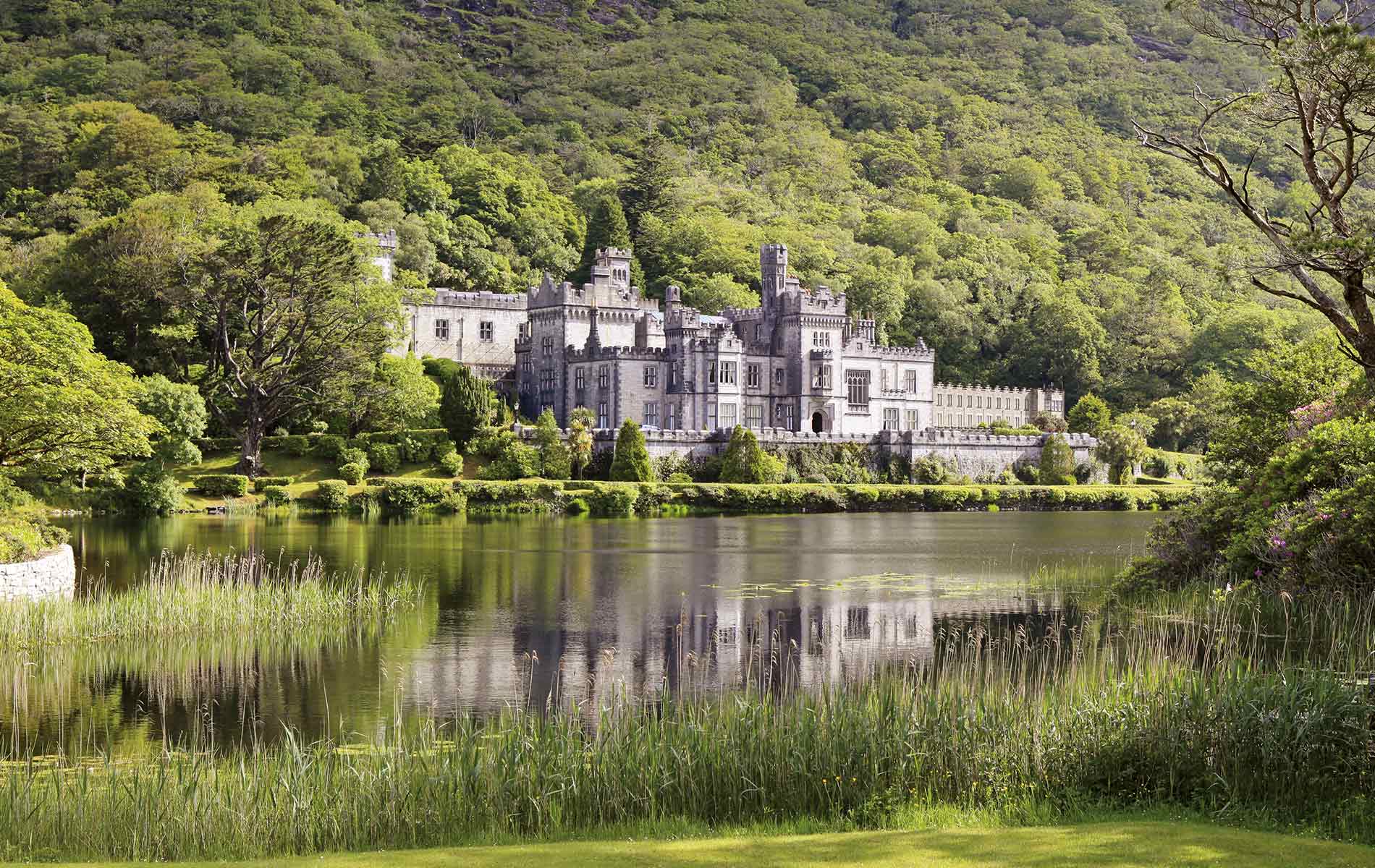
vie-magazine-connemara-life-kylemore-abbey-hero
Kylemore Abbey sits in the heart of Connemara, welcoming visitors to the west of Ireland with its rich history and beautiful landscape. Photo courtesy of Kylemore Abbey
The Continuing Story of
Kylemore Abbey
By Eithne O’Halloran
If mortar and bricks could talk, what stories would be told by the walls of Kylemore Abbey? For almost 150 years, its halls and stairways have witnessed the lives of many people, all united behind the granite facade to become part of one intriguing history—not just of the wealthy businessman and his family who built Kylemore, but also of the workmen, the servants, the school girls, the Benedictine nuns, and the many visitors who come to Kylemore each year, all with their own histories and stories to tell.
In 1867, the castle first rose up from the pristine Connemara countryside. Mitchell Henry, a surgeon, businessman, politician, and philanthropist, had the castle built for his beautiful wife, Margaret. His love for Margaret and their large family is apparent in every detail of the vast estate. Margaret laid the first brick using a beautifully engraved ceremonial trowel, and her family crest, that of the Vaughan family, hangs to this day in the hands of an angel above the castle door. The seventy-room castle boasted Italian decor, a magnificent ballroom, a library, a drawing room, and a dining room draped in black and gold silks. The estate also had its own darkroom, telegraph office, and fire brigade of scarlet-clad volunteer firemen. A mile from the castle, a magnificent eight-acre walled garden with twenty-one heated glasshouses was tended by up to forty gardeners.
The Henry family enjoyed a pampered lifestyle of expensive hobbies such as hunting, yachting, and photography punctuated by picnics and balls. Archive photographs show the sons, dressed in Scottish tweeds and looking the part of countrified young gentlemen, posing with fishing gillies and gamekeepers. For the five Henry daughters, Kylemore provided a break from the formality of London life, and they too enjoyed the outdoor pursuits of the ‘Irish Highlands’.
The local people were in awe of every detail of Kylemore’s transformation as it was built. Accustomed to life in meagre windowless cabins, even the walled tiles of the estate’s abattoir were a wonder to them. The well-paid work provided at Kylemore was a godsend for people who lived incredibly hard and precarious lives in the rugged countryside. The Henry tenure brought a period of security and improvement to the area.
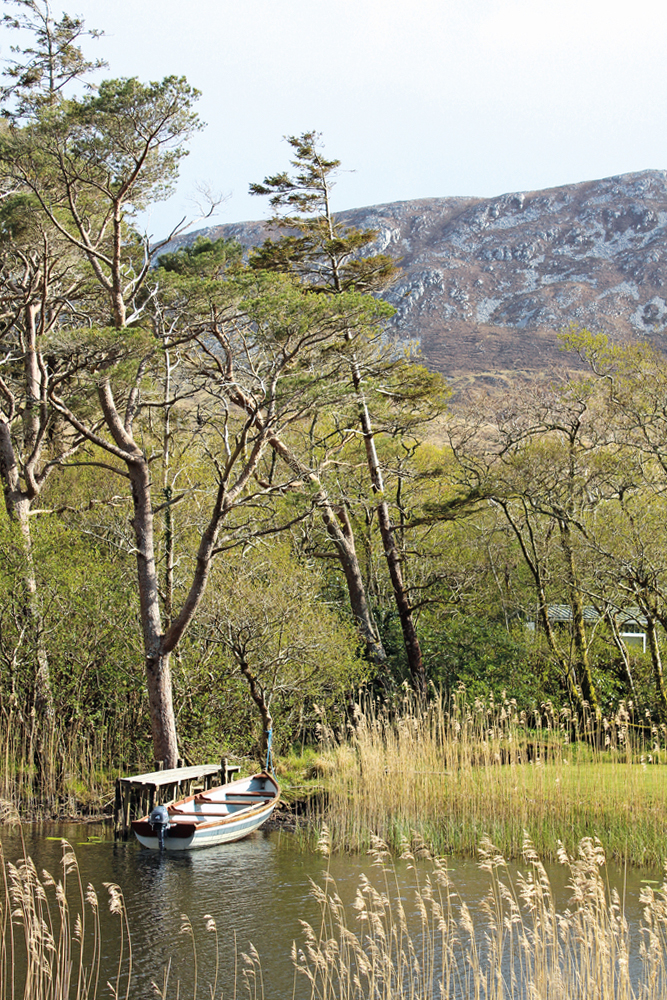
Photo by Lucy Mashburn
Great wealth, however, gave no immunity from tragedy, and the Henrys suffered more than their fair share. First came Margaret’s death at the age of forty-five, which occurred during a family holiday to Egypt, and later, the horrific death of Henry’s daughter Geraldine in an accident a few miles from Kylemore. Henry never could have imagined having his daughter’s remains shipped for burial in America or having his wife embalmed in Cairo. In time, a modest mausoleum was prepared for Margaret in a sheltered spot along the castle’s lakeside avenue, where she and Mitchell both now rest.
When Kylemore Castle was sold in 1903, the Duke and Duchess of Manchester arrived to take up residence. The castle was virtually torn apart in the couple’s rush to redecorate. It is reputed that the duke finally lost the castle in a late-night card game. Although apocryphal, the story fits with the public’s image of the flighty duke, who left the castle under a cloud of debt in 1913.
Next to come to Kylemore, in 1920, were the Benedictine nuns who had fled war-torn Europe when their ancient abbey in Ypres, Belgium, finally succumbed to shelling. In 1922, an international boarding school was opened in the Abbey, and the nuns, who lived a quiet life, were joined by their first intake of school girls. The girls brought youth, laughter, and light both into the lives of the nuns and into the building itself. Most days of the year, the Abbey would have up to a hundred girls tramping the stairs, performing plays, and giggling in their dorms at night.
In 2010, the last boarders left Kylemore Abbey, and once again a hush descended upon the classrooms and stairwells. Downstairs, however, it was a different story. Ever since the nuns began to welcome paying guests back in the 1950s, there has been a steady stream of visitors touring Kylemore. Spontaneous wedding proposals, inspired by the surroundings and the romantic history, are not unusual. Staff members regularly meet with couples who got engaged at the castle or spent their honeymoons in the nuns’ guest house in the 1950s. People often come to Kylemore looking for something more than the average holiday experience. They are looking for a sense of connection, for meaning in the stories, the landscape, and the history, and for a chance to reflect. Their experiences, their prayers and hopes, and what they leave behind become part of the ever-growing tapestry of lives woven into the continuing story of Kylemore Abbey.
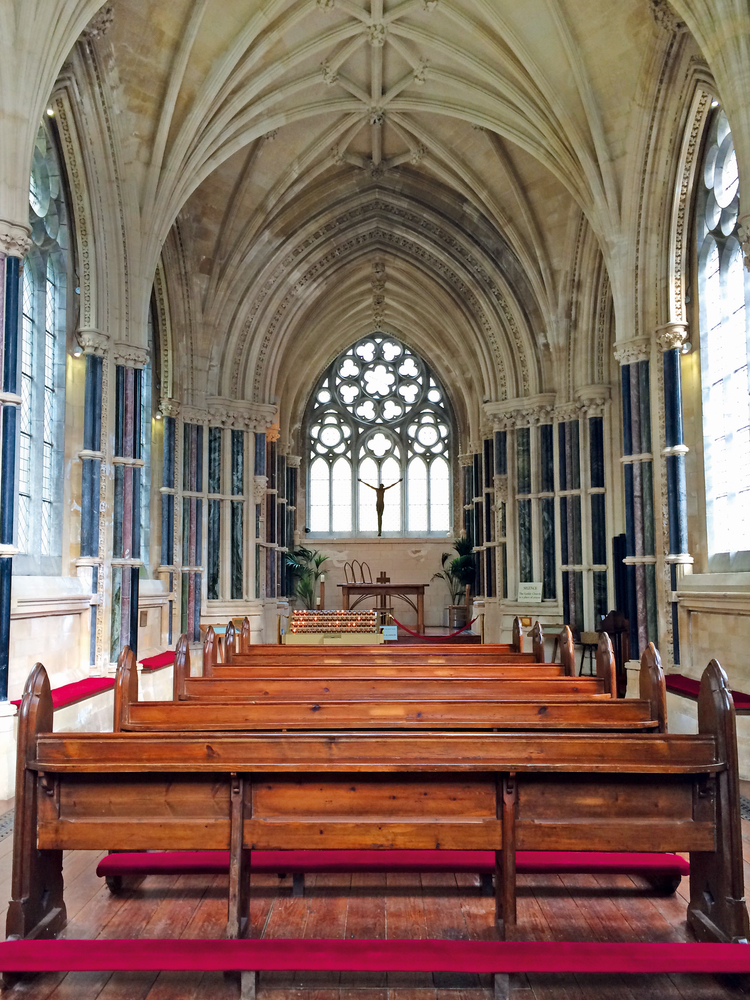
The cathedral-in-miniature Gothic Church remains open for use on the Kylemore estate. Photo by Lucy Mashburn
Bringing Notre Dame to Kylemore Abbey
The summer of 2016 saw Kylemore Abbey revert to its traditional role as a place of learning, and it was a group of American students that heralded a new era for the iconic building. In a unique meeting of minds and cultures, the Benedictine nuns of Kylemore Abbey have entered into a partnership with one of America’s most famous and prestigious Catholic universities, Notre Dame. Notre Dame students attend residential classes at Kylemore, which include creative writing, environmental fieldwork, literature, language, and spiritual retreats. It also offers them the opportunity to immerse themselves in the beautiful and inspiring setting of western Ireland.
In 1998, Notre Dame established the Keough-Naughton Centre for Irish Studies in Dublin. The centre operates as a ‘global gateway’ for Notre Dame students in Ireland. It hosts seminars and lectures from a broad range of Irish and international academics, artists, musicians, and thinkers. The centre provides visiting Notre Dame students with the fullest possible experience of Ireland and what it means to be Irish; however, it does not provide residential courses such as those available at Kylemore.
An extensive refurbishment plan has been under way at the Kylemore estate since winter 2015, centring on the area to the east of the building formerly known as Saint Joseph’s boarding school. When Kylemore Abbey was first built as the Henrys’ home, the east wing was the location of sumptuous Turkish baths. In 1959, the wing was badly damaged by fire and rebuilt as Saint Joseph’s, now a modern functional space providing the high standards of accommodation and learning to which Notre Dame’s students are accustomed.
Plans are also in place for a new monastic building to be built for the nuns, which will better serve their needs. The new monastery will be located next to the Benedictine church, facing out onto the lake and the Kylemore Valley, not far from the Abbey at the heart of the estate.
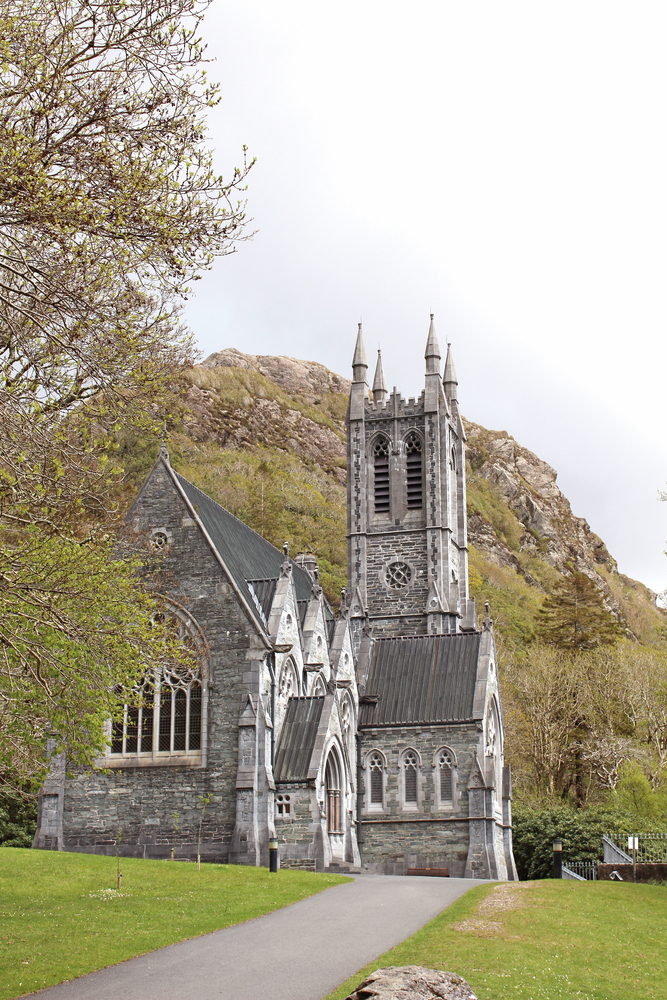
Henry Mitchell built the Gothic Church in memory of his beloved wife, Margaret. Photo by Lucy Mashburn
Famed worldwide as the home of the Fighting Irish American football team, Notre Dame has a connection with Ireland that features very strongly in its identity. This Irishness manifests itself in more ways than just individuals wearing green. The Keough-Naughton Institute for Irish Studies at Notre Dame is dedicated exclusively to Irish culture, literature, language, and politics. Many Notre Dame students learn to speak and express themselves in the Irish language, which is just one example of how Ireland has been brought to the university’s main campus in Notre Dame, Indiana.
The Fighting Irish catchphrase is given more than lip service, as the university now uses it as a way to express the attitude it wishes students to adopt in their learning journey. Notre Dame students are challenged not just to fight for success on the football field, but also to fight for knowledge, understanding, equality and justice, and a real connection with the college’s symbolic home, Ireland. Notre Dame describes itself as an ‘unashamedly Catholic university’ where the majority of students live on campus in single-sex dormitories, and this ethos continues at Kylemore.
For past pupils of Kylemore Abbey, this all sounds quite familiar. The school’s alumnae, now spread around the globe, will be watching with interest—and perhaps more than a little envy—to see how Kylemore’s latest generation of students fares. Notre Dame aspires to widen the students’ horizons and give them an experience of Ireland outside of Dublin. There is little doubt that all who spend time at Kylemore will be affected by the surroundings. Here, a learning environment can be created where lifelong friendships will unfold, and the learning experience will be enriched and enhanced by history and natural beauty.
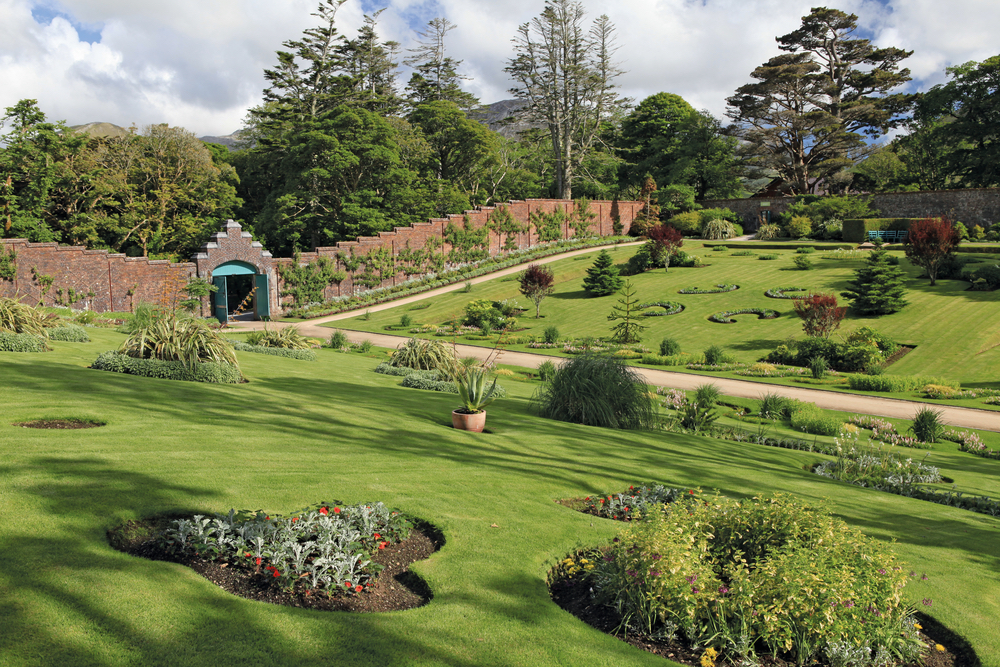
The award-winning Victorian Walled Gardens at Kylemore Abbey cover nearly six acres. Photo courtesy of Kylemore Abbey
Over the years, Notre Dame has played host to some very influential Irish people on their home campus, including poets W. B. Yeats and Seamus Heaney, past presidents Mary Robinson and Mary McAleese, Taoiseach Enda Kenny, and the band U2. This tradition will continue at Kylemore, as an impressive line-up of speakers and guest tutors from Ireland’s cultural sector and academic spheres will be invited to contribute to the students’ experience.
In 2015, Taoiseach Enda Kenny attended a ceremony at Kylemore Abbey to launch the beginning of the restoration and put an end to speculation about the future of the estate. The partnership with Notre Dame secures Kylemore Abbey both as the home of the Benedictine nuns and as an essential contributor to the economy of Connemara. Notre Dame will now have a home in the west of Ireland, ensuring that the two-way relationship can only grow stronger as time goes on.
— V —
Share This Story!
KEEP UP WITH THE LATEST STORIES FROM VIE


















































































































































